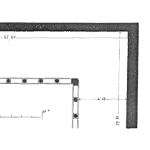
The Weibull distribution’s popularity across various industries stems from its remarkable flexibility and adaptability in modeling a wide range of data types, especially in reliability engineering and failure time analysis. This versatility is primarily due to the Weibull distribution’s shape parameter, which allows it to model different failure rates over time, aligning closely with the real-world behavior of many systems and components.
[Read more…]











